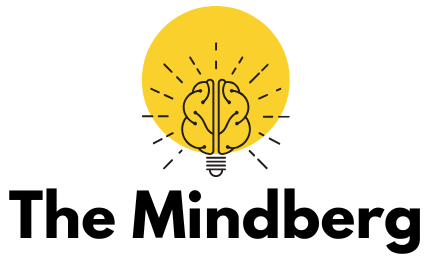Cannabis, widely known for its recreational and medicinal uses, has gained increasing acceptance in recent years. However, its effects are not always benign. Among its potential adverse consequences, cannabis-induced delirium is a condition characterized by sudden confusion, disorientation, and impaired cognitive functioning. While it is relatively uncommon, this phenomenon can have significant implications for both users and medical professionals, especially as cannabis becomes more accessible.
Delirium, in general, refers to a temporary state of mental confusion often triggered by underlying medical conditions, substance use, or withdrawal. When caused by cannabis, delirium typically manifests in individuals who consume excessive amounts or have heightened sensitivity to the substance.
The condition may be exacerbated by other factors such as pre-existing health conditions or the use of additional substances. Cannabis-induced delirium can be alarming for both the individual experiencing it and their loved ones, emphasizing the need for a better understanding of its causes and treatments.
With the growing popularity of cannabis, it is crucial to explore its potential risks alongside its benefits. Identifying the causes and recognizing the symptoms of cannabis-induced delirium can help individuals make informed decisions about cannabis use.
Additionally, understanding the available treatments and preventive measures can provide reassurance to those who may be at risk. This article delves into the causes, symptoms, and treatments of cannabis-induced delirium, aiming to shed light on this often-overlooked condition.
Understanding Cannabis-Induced Delirium
Cannabis-induced delirium occurs when the consumption of cannabis leads to acute mental confusion and altered consciousness. This condition is more likely to affect individuals who consume high-potency cannabis products, particularly edibles or concentrates.
These forms of cannabis often deliver higher doses of THC, the psychoactive component of cannabis, which can overwhelm the brain’s ability to process and regulate its effects.
Individuals with no prior tolerance to cannabis or those with a genetic predisposition to psychiatric conditions are at a higher risk of experiencing delirium. The rapid onset of symptoms following cannabis use can make it difficult to predict or prevent an episode, especially for new or infrequent users.
Additionally, environmental factors such as stress, sleep deprivation, or dehydration can amplify the effects of cannabis, potentially triggering delirium in susceptible individuals.
While the condition is temporary, it can be distressing and disruptive. The severity and duration of cannabis-induced delirium vary depending on the amount consumed, the individual’s metabolism, and the method of consumption. Understanding these risk factors is essential for reducing the likelihood of experiencing this condition.
Causes of Cannabis-Induced Delirium
The primary cause of cannabis-induced delirium is excessive consumption of THC, the compound responsible for the psychoactive effects of cannabis. High doses of THC can disrupt the brain’s normal functioning, particularly in regions responsible for memory, attention, and decision-making. This disruption leads to the cognitive and behavioral symptoms commonly associated with delirium.
Another contributing factor is the individual’s sensitivity to THC. Some people are genetically predisposed to heightened sensitivity, making them more likely to experience adverse effects from cannabis.
Additionally, individuals with pre-existing mental health conditions, such as anxiety, depression, or schizophrenia, are at greater risk of developing cannabis-induced delirium. The substance may interact with these conditions in unpredictable ways, exacerbating symptoms or triggering new episodes.
Combining cannabis with other substances, such as alcohol, prescription medications, or recreational drugs, can also increase the likelihood of delirium. These interactions can amplify the psychoactive effects of cannabis, leading to more severe cognitive impairment. Finally, environmental factors like poor nutrition, dehydration, or high stress levels can exacerbate the effects of cannabis, making delirium more likely.
Recognizing Symptoms of Cannabis-Induced Delirium
Symptoms of cannabis-induced delirium typically appear shortly after consumption and can last for several hours or, in rare cases, days. The most common symptoms include confusion, disorientation, and difficulty concentrating. Individuals may also experience memory lapses, a lack of awareness of their surroundings, and impaired decision-making abilities.
Behavioral changes are another hallmark of cannabis-induced delirium. These may include agitation, paranoia, or restlessness. In some cases, individuals may exhibit inappropriate or irrational behavior, which can be distressing for both the individual and those around them.
Physical symptoms, though less common, can accompany the cognitive and behavioral signs of delirium. These may include an elevated heart rate, excessive sweating, or changes in pupil size. While these physical symptoms are usually not life-threatening, they can contribute to the individual’s overall discomfort and anxiety.
Recognizing the symptoms of cannabis-induced delirium is crucial for providing timely and appropriate care. Early intervention can help alleviate symptoms and prevent further complications.
Diagnosing Cannabis-Induced Delirium
Diagnosing cannabis-induced delirium involves a thorough evaluation of the individual’s symptoms, medical history, and recent substance use. Healthcare professionals typically begin by ruling out other potential causes of delirium, such as infections, head injuries, or withdrawal from other substances.
A detailed account of the individual’s cannabis use, including the type, dose, and method of consumption, is essential for an accurate diagnosis. Blood or urine tests may also be conducted to confirm the presence of THC and rule out other substances.
Since cannabis-induced delirium is a temporary condition, the diagnosis often relies on observing the resolution of symptoms over time. Monitoring the individual’s recovery process can provide additional insights into the condition and its underlying causes.
Treatment Options for Cannabis-Induced Delirium
The primary goal of treatment for cannabis-induced delirium is to alleviate symptoms and ensure the individual’s safety. In most cases, symptoms resolve on their own once the effects of THC wear off. However, medical intervention may be necessary for severe or prolonged episodes.
Supportive care is the cornerstone of treatment. This includes providing a calm and reassuring environment to reduce anxiety and agitation. Hydration and nutrition are also important for promoting recovery, particularly if the individual is experiencing physical symptoms like dehydration or nausea.
In some cases, medications may be prescribed to manage specific symptoms, such as anxiety or agitation. These medications should only be used under the supervision of a healthcare professional, as they can interact with THC and other substances. For individuals with underlying mental health conditions, ongoing psychiatric care may be necessary to address the root causes of their cannabis-induced delirium.

